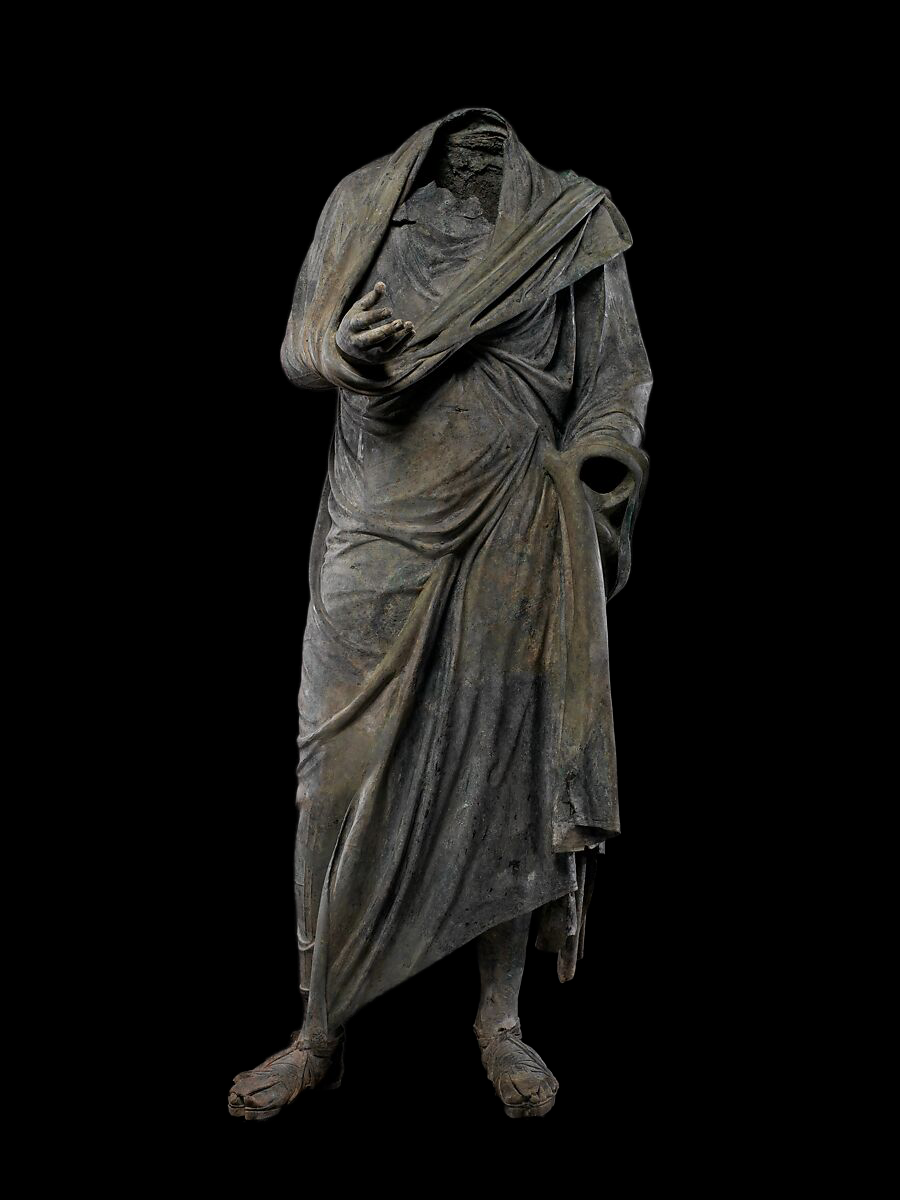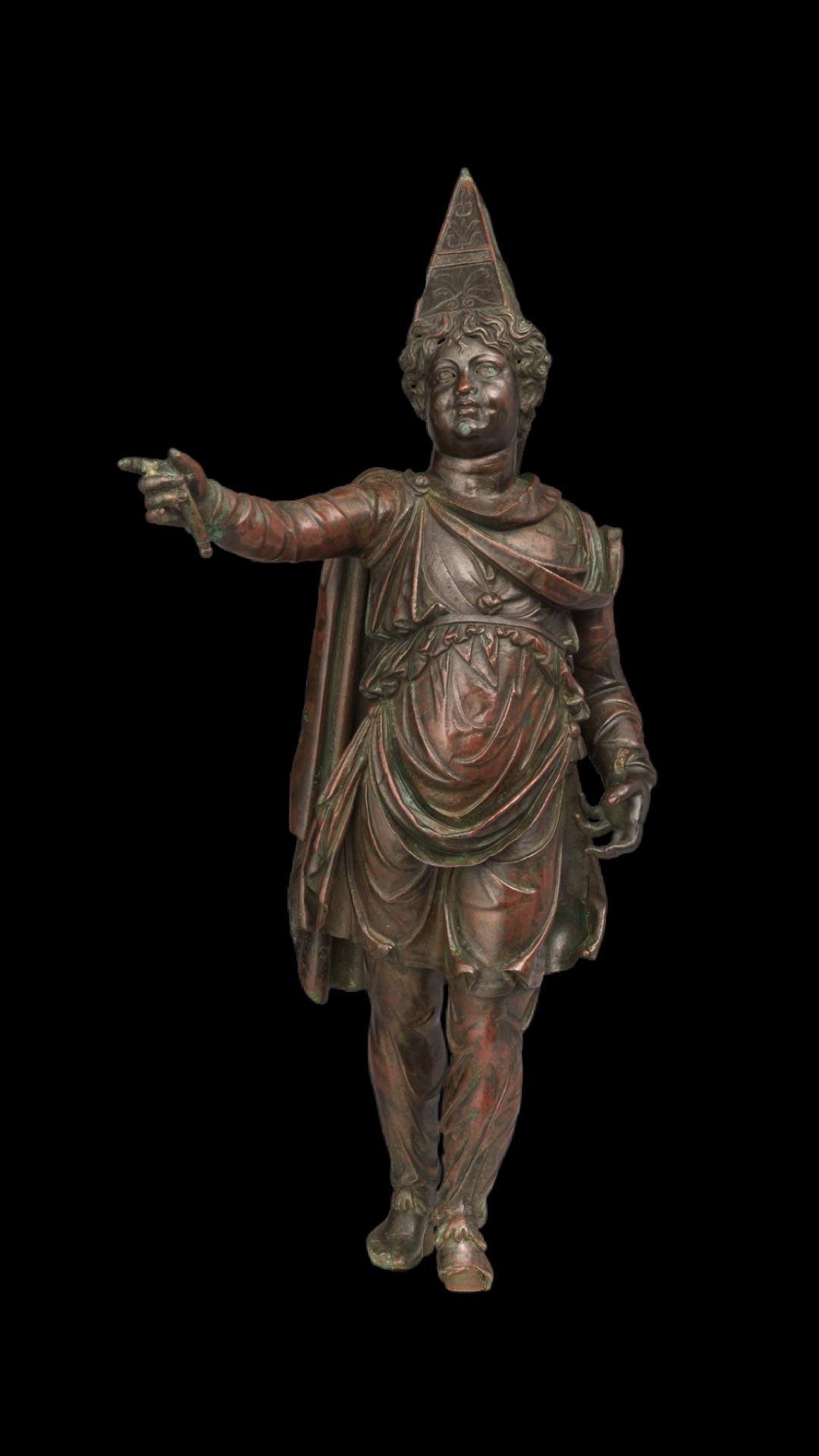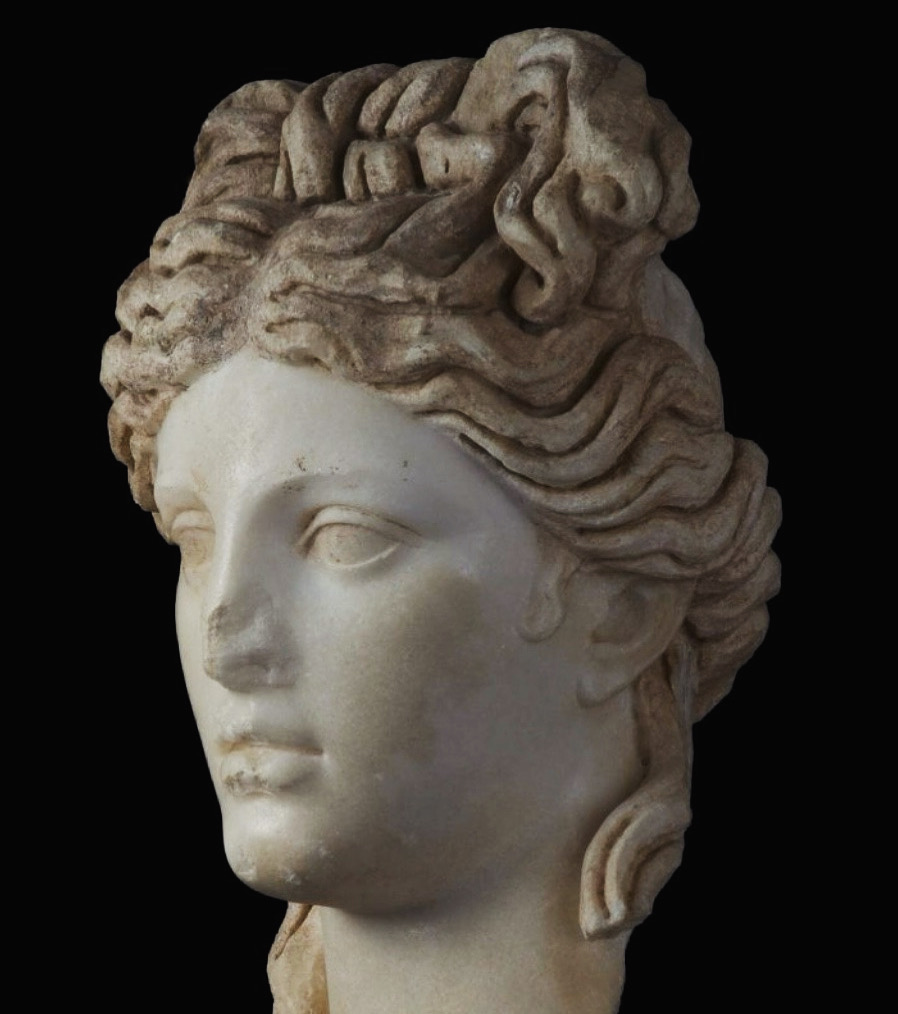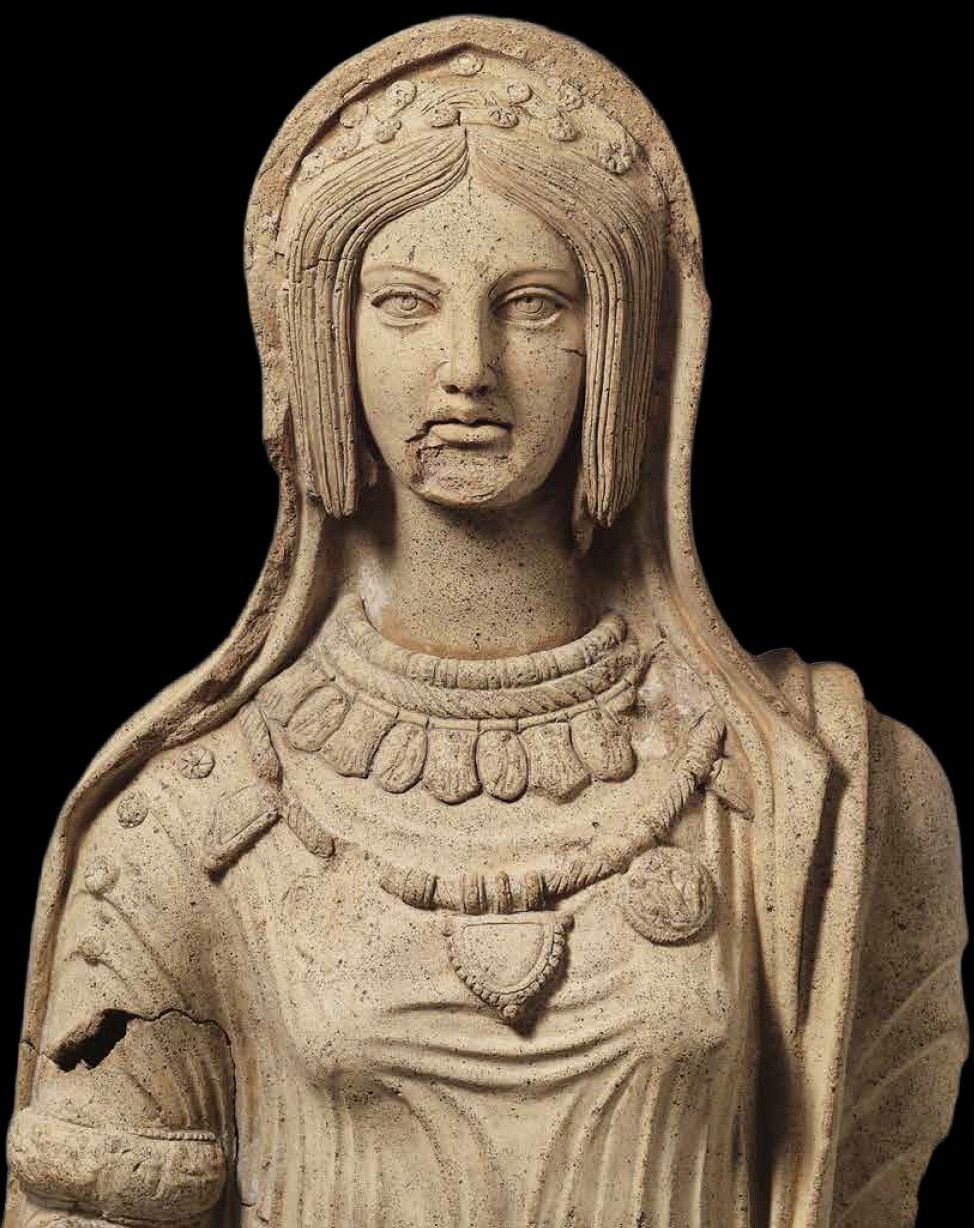I’ve long admired this statue – a feat of large scale lost-wax casting giving a sense of the scale possible (infinite!), but also the surface subtleties achievable. Now headless, this standing gentleman has the distinct comportment and garments of an orator or magistrate – a statue mode used in the post-Classical period for honorifics set up around cities and sanctuaries across the Greek world.
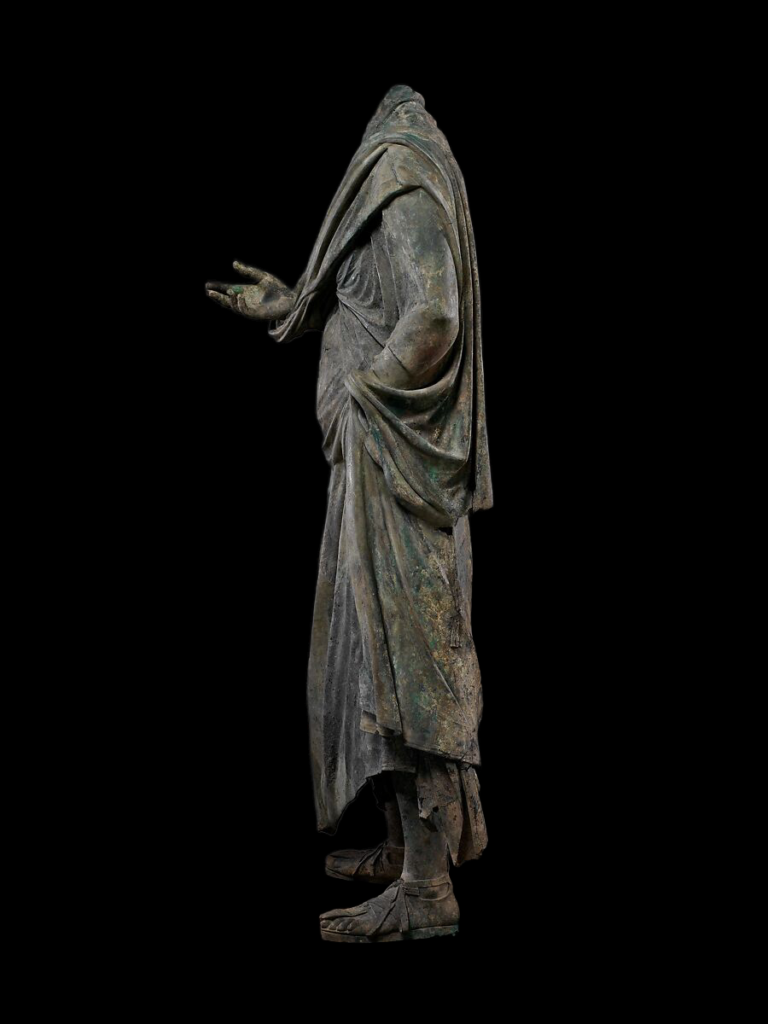

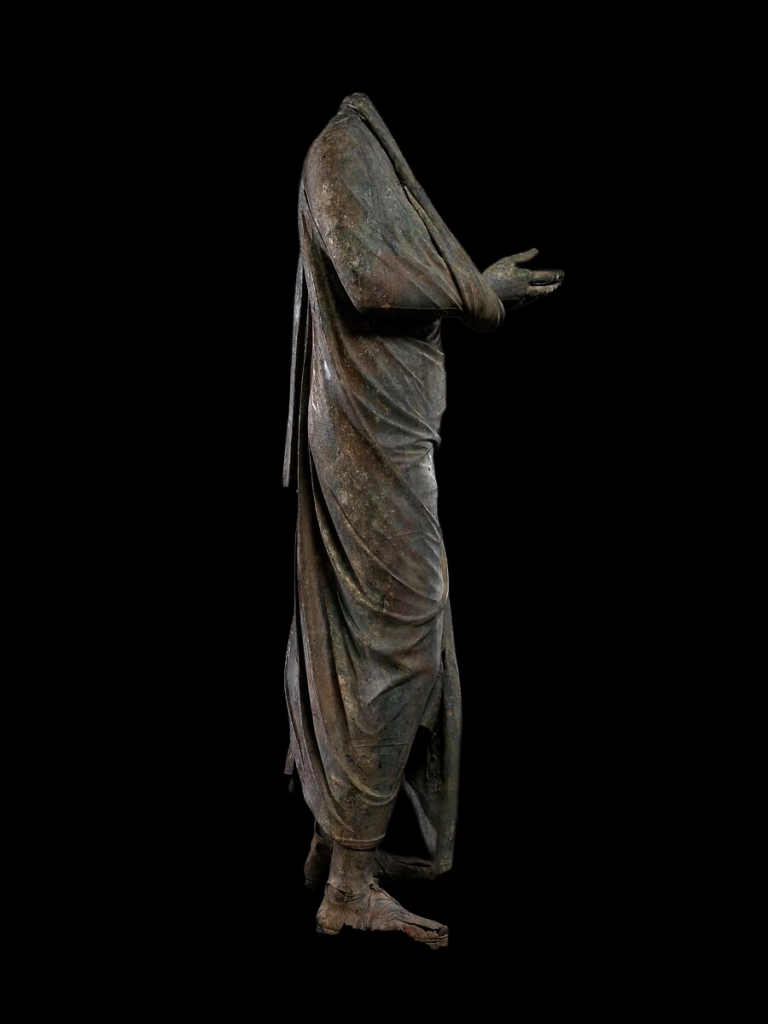
He is enveloped in two types of garment, and if you get up close and personal to the statue at the Met, you’ll notice extreme sensitivity to every detail, with the thick woolen one bulging slightly beneath a thinner overlay showing barely-there pressure folds – an astonishing touch of realism mimicking the creases in neatly folded and stored clothing. (Another neat touch: the hems are weighted at the corners to keep everything just so…)
His expressive right hand emerges from an especially enveloping swathe of drapery, pinning most of that arm to his chest. This arm-sling arrangement was not an accident – it was meant to highlight the dignity and restraint expected by well-educated, well-spoken orators. No emotional gushing here….
The restraint imposed and amplified by the garment itself strikes me as similar to aspects of the Roman toga. Cases where clothes really do make the man…

